The J. Crew Catalog of the '90s Was My Generation's Preppy Handbook
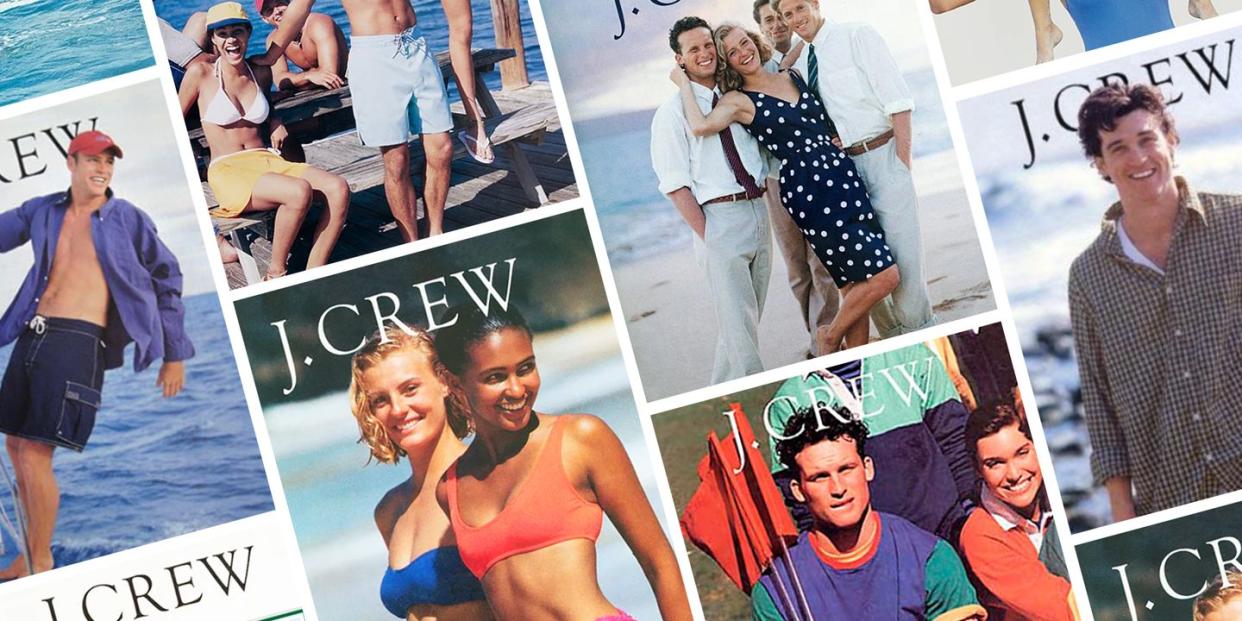
As reports swirled last weekend about J. Crew’s impending bankruptcy, I spontaneously posted to Instagram a selection of what I felt were among the most seminal J. Crew catalog moments of all time. I’m talking about that sweet spot between the late 80s and early 90s, a more innocent time when mail-order ruled, the Internet did not exist, and you could pay by check.
There, in a shot from Fall 1989, was a tousled-haired Matthew Barney—pre-Cremaster Cycle, pre-Björk—wearing that color-block T-shirt I’d lobbied my mom for so hard, looking as though he was about to take off for a game of Capture the Flag.
Then, that great Summer ’89 bikini cover which, in one fell swoop, heralded a liberating, modern new age of mix-and-match swim separates—something that simply did not exist before. The two models (the blonde one, it bears noting, represents my current quarantine hair goals) left all of us wondering which girl we were—sporty athletic-inspired top or elegant bandeau? High-waisted rollover bottom (which, unrolled, doubled as a boy short—this, big news at the time, seemed risky to me) or classic bikini?
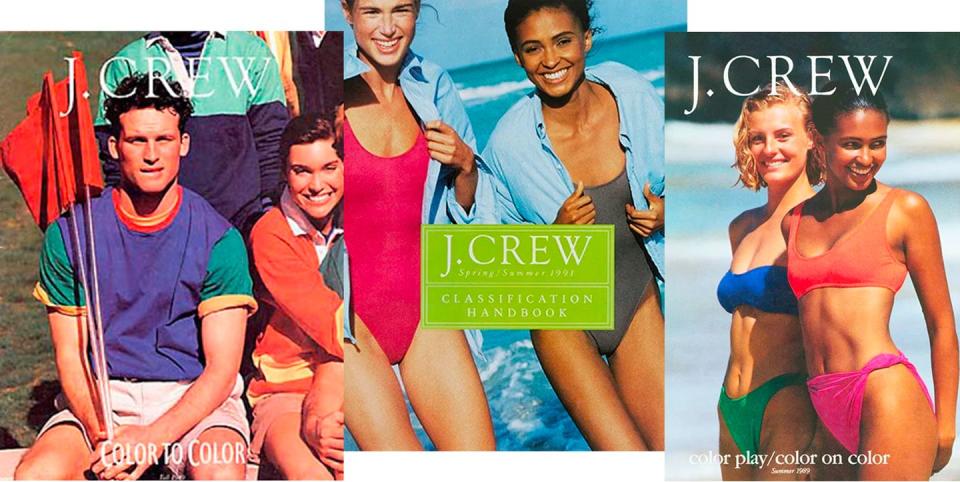
Next, the image of two friends (one of whom was Annette Roque, later to become Annette Lauer) traipsing along the beach on a perfect day with matching men’s chambray shirts casually tossed over their simple maillots. That one is burned into my memory as a hallmark of the brand’s relaxed, borrowed-from-the-boys style, and the way it always encouraged women, via unisex size guides, to shop the menswear, too. Talk about ahead of the curve!
But, still: Can you imagine remembering—vividly, and more than 25 years later, no less—a mail-order catalog?
“I Lived for Them"
It turns out that, yes, you can, because as the day went on, comments rolled in at an astonishing rate, erupting into a full-on nostalgia-fueled Gen X love fest. “Oh how I remember those catalogs and the heaps of dog-eared pages,” reminisced Net à Porter president Alison Loehnis.
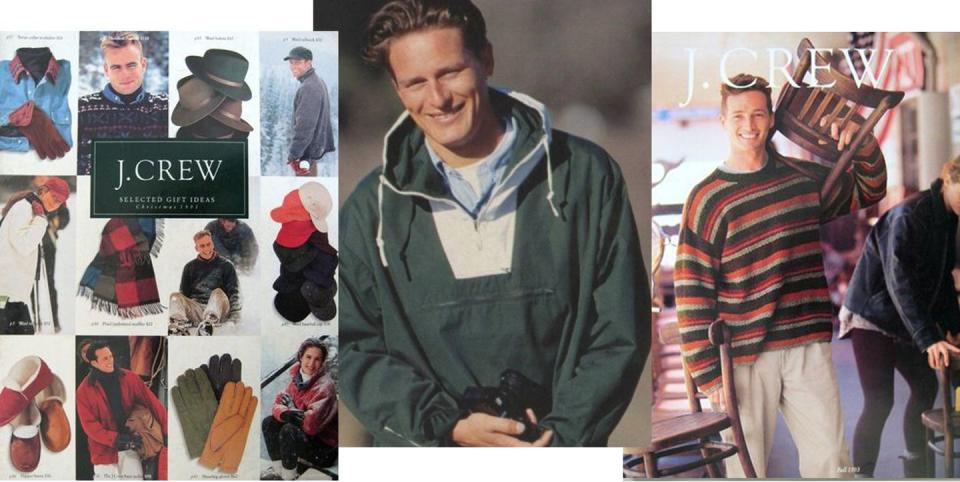
“It was my favorite mag,” commented La Ligne co-founder Valerie Macaulay, echoing sentiments held by many, that this straightforward sales tool that materialized in mailboxes across the country each season was somehow so much more. “I lived for them,” added stylist Karla Welch.
“Ahhh, the rollneck sweater,” typed an old friend, registering the company’s most iconic hall-of-famer. “The anorak was life,” offered a nail art influencer who had one in the same color as I had—hunter green, and wondered aloud if it was still at her parents’ house.
“Don’t forget the Barn Jackets with the pinwale cord collars!” chimed in designer Peter Som. “All I ever wanted was a Barn Jacket,” pined another.
Someone fondly recalled having a reversible bikini in the shade called “Lake,” while another friend figured that leafing through the catalog in her college dorm room “was the first time I learned the word ‘ecru’ was a color.”
J. Crew, rife with its idiosyncratic references, was a language we collectively spoke without even realizing it. For a company that mostly sold khakis and T-shirts (albeit expertly layered and rumpled just so), why did we all connect so deeply? Why does it resonate still?
American Prep, Par Excellence
For many Gen Xers of the preppy persuasion, the brand, which launched as a catalog in 1983, appeared on our doorstep (literally) at a time when we were coming of age, figuring out who we were and who we wanted to be. J. Crew was one of the first brands I claimed as my own.
So, too, for Som. “Did we call the number or fill out the little order form?” he mused wistfully the other day on the phone from his home in Sag Harbor. A San Francisco native who’d moved East for school, Som saw his leafy New England campus mirrored in the pages of the catalog, and something clicked.
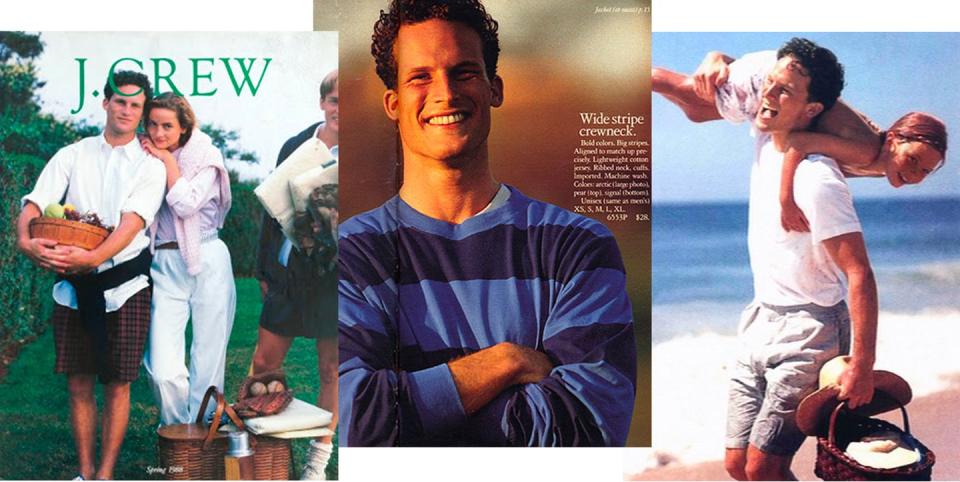
“That East Coast look was cool and classic,” says Som, who’d gone through a brief New Wave phase in high school, and was “a dorky kid in K-Swiss sneakers trying to find who he was” by the time he reached college. He calls the influence of J. Crew nothing short of a “pivotal watershed moment.”
J. Crew not only defined an aesthetic—American Prep, par excellence—it built a world. The styling was approached as storytelling. There was a familiar cast of characters, and seeing them return each season when the new catalog—or, “Source Guide” as the company savvily came to call them—arrived, was almost like catching up with old friends. Did anyone have a new haircut? Who was this new person in the mix? Who did we think was dating whom in this story we told ourselves, closely studying the snapshots of al fresco meals, piggyback rides (a recurring trope), and bicycling à deux for clues.
And what were they up to now, in this fictional universe of endless long weekends into which we imagined inserting ourselves? Were they off to a clam bake? Beach bonfire? A snowball fight? Impromptu sledding? Or, since PJs, robes and wooly socks seemed to be big business, a slumber party at someone’s weekend place?
Even the address in Lynchburg, Virginia from which the catalog originated (and all returns headed)—the cheery, patrician sounding One Ivy Crescent—was delightfully on-brand. If ever there was a preppy handbook, this was it, come to life.
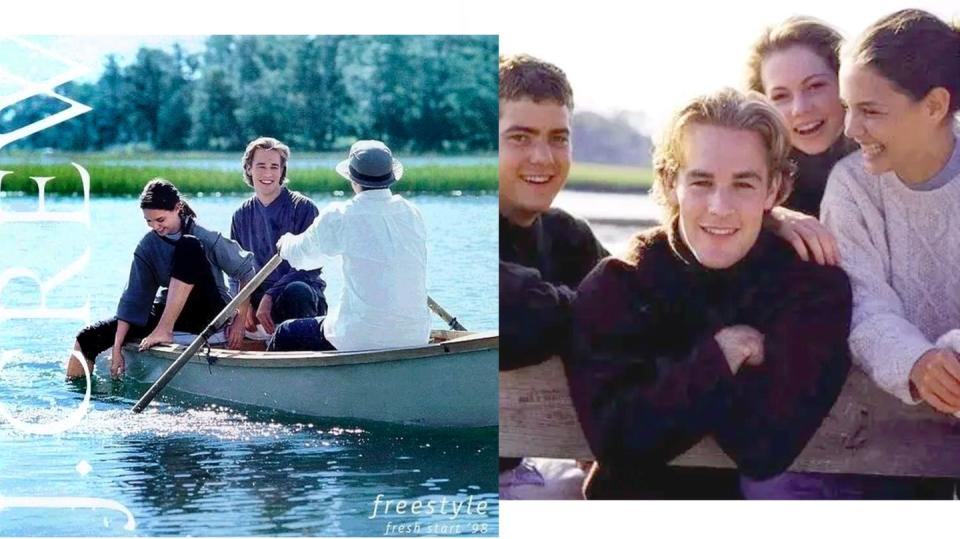
Aspirational, Yet Relatable
Part of the magic of #OldJCrew, and one of the reasons we grasped onto it so tightly (and apparently never let go) was the dream it offered. “J. Crew was an early adopter of lifestyle. On the beach, or by a campfire, everyone looked like they were having fun. It wasn’t just about a product shot, but how do you live your life in these clothes?” says Som. “You looked at the catalog and thought, ‘I want to live like that.’”
“You could envision yourself there,” agrees Loehnis, who can still visualize where in her childhood home she kept her collection of catalogs. “And the casting was always perfect. You either dreamed of being that girl or going out with that guy.”
J.Crew conjured a world that was aspirational, yet relatable. It had the air of affluence, certainly, yet it was not snobby. It was pedigreed, yet unpretentious. The models were great looking, but not intimidatingly so. The inherent cool of their lightly wrinkled, un-tucked style seemed achievable. “Inviting” is how Som describes it. “It was escapist, but it was also at our fingertips.”
And in more ways than one. As Loehnis recalls from her teenage and college years, the catalog was something “you could pour over like a magazine,” but unlike most fashion magazines, “there were things you could get your hands on. Maybe you couldn’t afford everything, but it was accessibly priced; it was within reach.” A low-tech precursor to e-commerce today, it was “shopping on your own terms, in your house, lying on your sofa.”
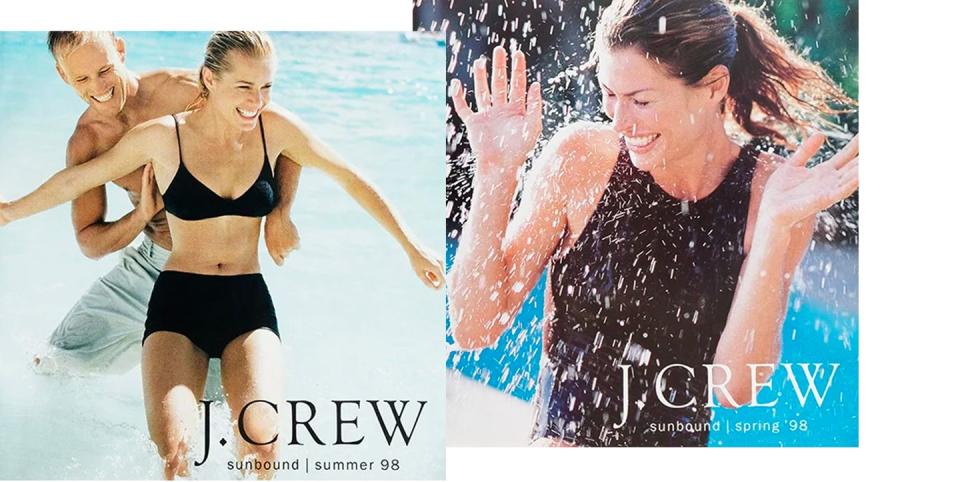
And who could forget the charming southern switchboard ladies, who answered the phones in Virginia? “You had to call that phone number and it was always a lovely, helpful woman,” Loehnis fondly recalls. “You’d ask if they had your size and color and she’d put you on hold and check. And the answer was never, ‘No;’ it was always, ‘Sure, that might come in.’”
All these years later, I’ve still got my original rollneck. Charcoal grey, in a men’s size medium, ordered extra-big so that worn over a pair of leggings on campus, the shape (the perfect amount of boxy) and the length (safely under my butt) would be just right, and the rolled collar would stand up and flop just enough to sort of pass as a turtleneck.
I still wear it—no holes, hardly any pills—on weekends when I’m maybe just a little bit chilly. And you know what? It’s perfect.
You Might Also Like

